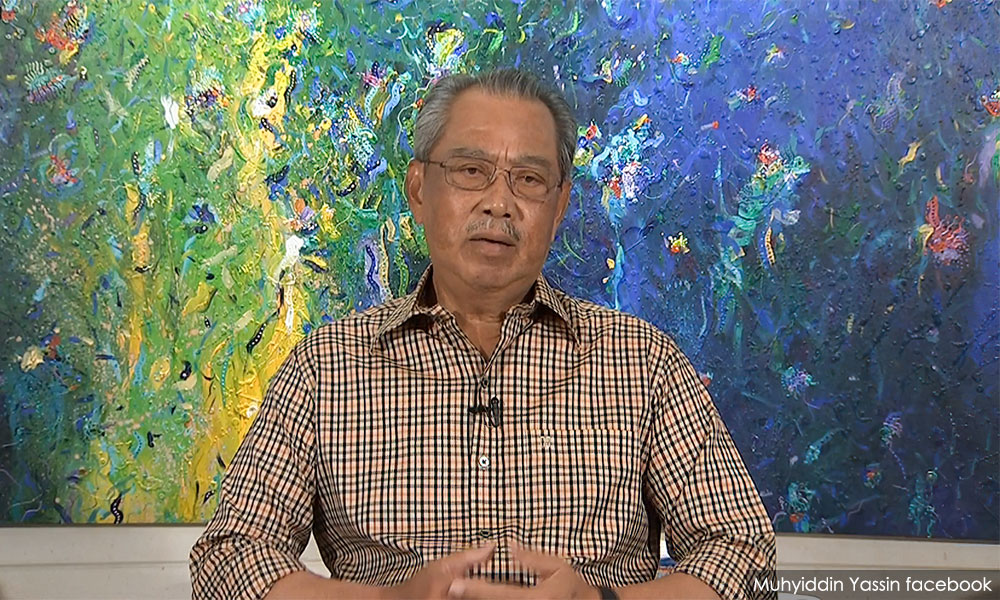COVID-19 | The Health Ministry today listed down the criteria used to classify an individual as a Covid-19 close contact, and who will get the home surveillance order (HSO) or otherwise.
Health director-general Dr Noor Hisham Abdullah said that the HSO is issued to individuals with mild symptoms of the virus but does not fulfil the criteria to be admitted into hospital as a patient under investigation (PUI).
The order can also be issued to those showing no symptoms, but have a history of an epidemiological link to a case such as being a close contact to a positive case, or also known as person under surveillance (PUS).
"A close contact to a Covid-19 positive case is an individual who has been identified by a District Health Office based on on-the-ground investigation and risk assessment exercise.
"A close contact is an individual who has direct contact with a positive case. This includes anyone who has met face-to-face with a Covid-19 patient in a distance of less than one-metre, or has had physical contact with a Covid-19 case within 14 days from the date of infection," Noor Hisham said during a press conference aired via Facebook Live this evening.
According to him, other categories of individuals considered as close contact include:
- Healthcare workers who provided treatment to a Covid-19 positive person without using full personal protection equipment
- Family members who live in the same house as a Covid-19 positive case
- Individuals who sat close (less than one-metre) to a Covid-19 case (such as in the office or classroom)
- Anyone who travelled together or was seated closely for less than one-metre with a person who tested positive throughout a journey
"Those who have been in contact with a positive case, but are not identified as close contacts, would not be given the HSO and the pink bracelets.
"However, these individuals are advised to undergo self-quarantine, monitor their health status for 14 days and practise all advice issued by the Health Ministery," he added.
Noor Hisham did not specify the reason for the explanation on the HSO and close contacts. However, it is believed that it was aimed at addressing confusion over the matter.
It came two days after Prime Minister Muhyiddin Yassin appeared on television while under self-quarantine, which showed him not wearing a pink wristband.

This had drawn criticism against the premier, where he was accused of violating the Health Ministry's directive. The Prime Minister's Office had issued an immediate statement in response to the issue, saying that the Health Ministry did not give Muhyiddin the quarantine wristband as he was only advised to undergo self-quarantine.
However, this was disputed by DAP secretary-general Lim Guan Eng today, who posted on Facebook saying that under normal circumstances, those advised to self-quarantine are also given white wristband instead of the pink one.
"I was one of the ordinary citizens who was made to wear the white surveillance wristband because I was undergoing self-quarantine at home for 14 days from Sept 26.
"Upon my return from Sabah on Sept 26, I took a Covid-19 test on Sept 27 and Oct 2. Both returned negative. But I still had to wear the white wristband until the end of my self-quarantine period," Lim said.
Most cases related to clusters
During the press conference, Noor Hisham also explained the high number of daily Covid-19 cases linked to in-community spread.
This came as an answer to a question about sporadic cases in the country following a huge number of cases not linked to clusters, such as yesterday's 303 infections.
He said that many of the cases announced as community infection were actually linked to clusters.
They were usually announced as in-community infection first pending further investigation, before being assigned to their respective clusters.
"Many of these cases are actually contact tracing and related to assisting of the new clusters. Since it's under investigation, we had to classify it temporarily under community screening.
"Once the epidemiology link is found, we will announce it as (part of ) a cluster. We have a very short period of time from 12 noon until 6pm to verify the data and to assign the cases to clusters.
"If we are not able to assign (in time), we would lump them together under community infection. Then we will continue to investigate and assign (it to a cluster) once we found the cluster," he added. - Mkini




No comments:
Post a Comment
Note: Only a member of this blog may post a comment.